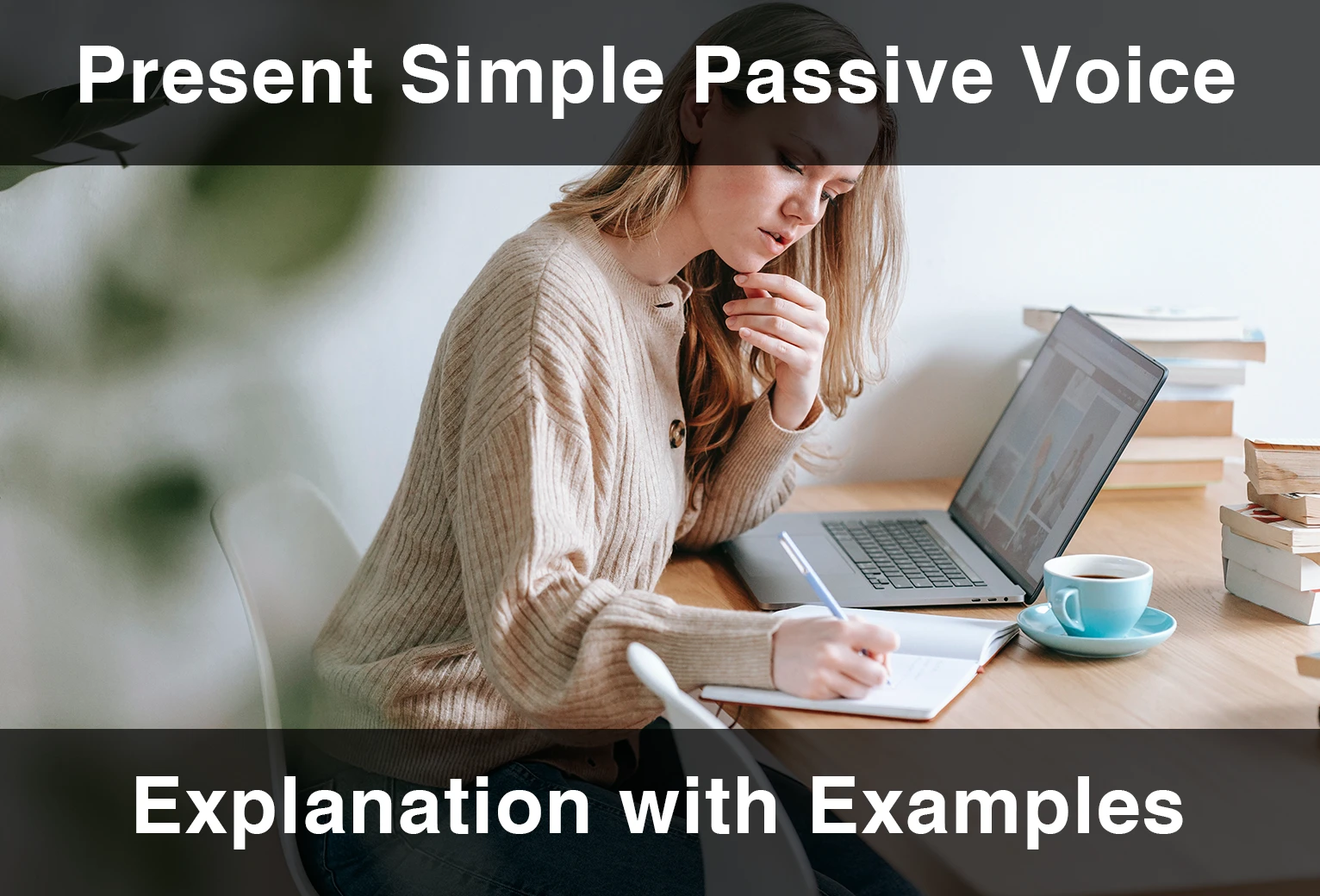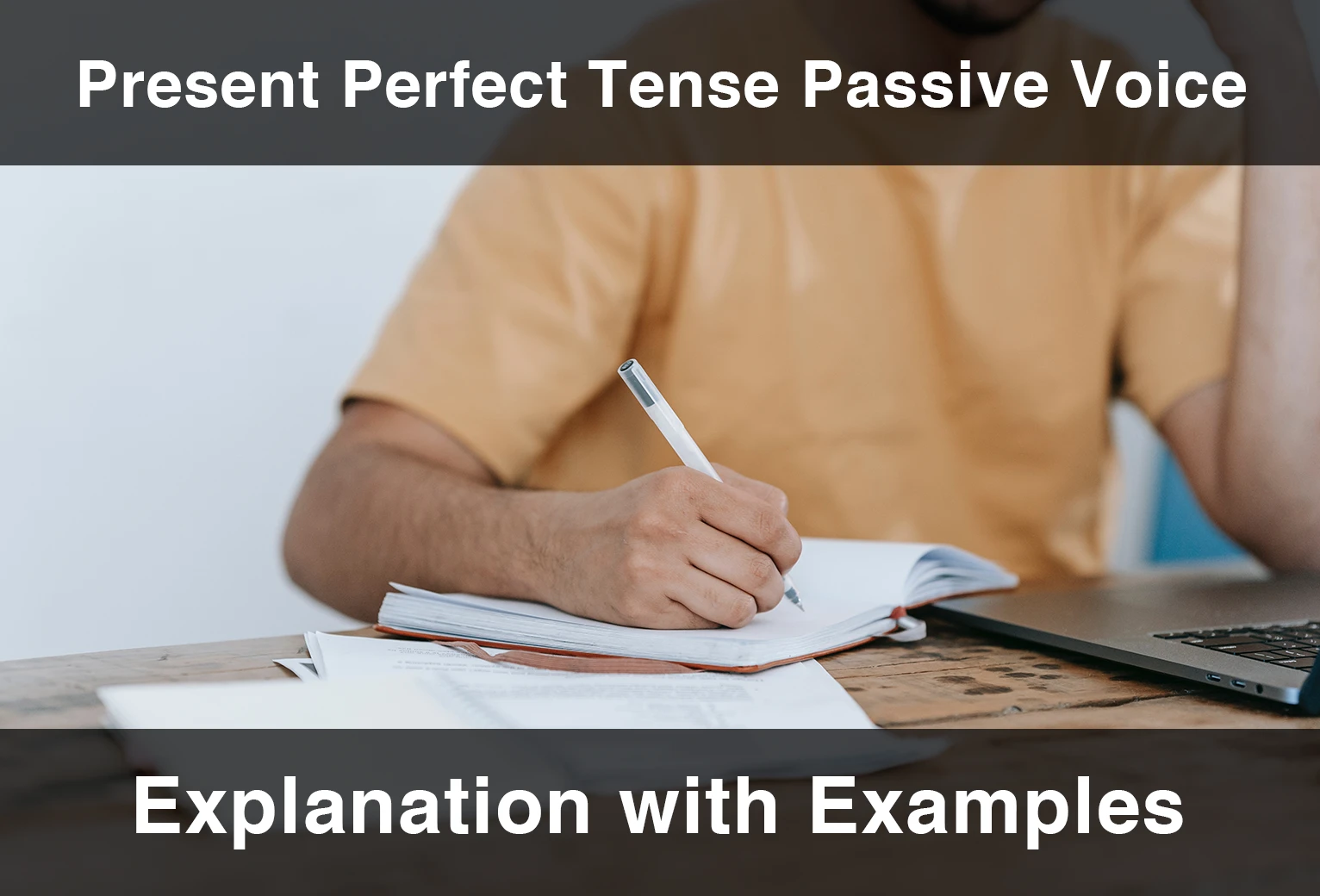As we have already learned, the active voice puts emphasis on the agent, which means whomever is doing the action. On the other hand, the passive voice emphasizes the subject, who is affected by the action being performed and obscures the agent. In the case of Present Perfect Continuous Tense, things change a bit. Present Perfect Continuous Passive Voice doesn’t put the emphasis on the subject, rather the action. This article is prepared to help you learn all about the Present Perfect Continuous Tense Passive Voice.
How to Make Present Perfect Continuous Passive Sentences
When forming a Present Perfect Continuous Tense sentence in the passive voice, we use the auxiliary verb “have been” along with the past participle of the main verb and the auxiliary verb “being.” The formula for Present Perfect Continuous Tense sentence in the passive voice is subject + has/have been + being + past participle of the main verb(V3) + by + agent (optional).
Some points to consider when forming a Present Perfect Continuous Passive Sentence:
Auxiliary verb: Use “have been” as the helping verb in the present perfect continuous tense. The form of “have” changes depending on the subject.
Main verb: Use the past participle of the main verb. The past participle is formed by adding “-ed” or “-d” to regular verbs, or by using irregular verb forms
Auxiliary verb: Add the auxiliary verb “being” after “have been” to indicate the continuous aspect of the action.
Passive voice: To convert the sentence into the passive voice, use the past participle of the main verb and rearrange the word order so that the subject of the active sentence becomes the object of the passive sentence, and the agent (if mentioned) becomes the subject preceded by “by.” However, the agent is optional and may not be included in the sentence.
We can form different types of sentences using the Present Perfect Continuous Tense Passive Voice, these sentence steps being positive, negative and interrogative. Let’s take a look at how to form each type of sentence.
1. Positive Present Perfect Continuous Tense Passive Voice
We use the formula of subject + has/have been + being + past participle of the main verb (V3) + by + agent (optional).
Active Voice: They have been refurbishing the house.
Passive Voice: The house has been being refurbished.
2. Negative Present Perfect Continuous Tense Passive Voice
We use the formula of subject + has/have been + not + being + past participle of the main verb (V3) + by + agent (optional).
Active voice: She has been cooking the food.
Passive voice: The food has not been being cooked by her.
3. Interrogative Present Perfect Continuous Tense Passive Voice
We use the formula of Have/Has + subject + been + past participle of the main verb + by + agent (optional).
Active voice: Have you been working on the project?
Passive voice: Has the project been being worked on?
Present Perfect Continuous Positive Passive Sentences
As we learned above, the formula for Present Perfect Continuous Positive Passive Sentences is subject + has/have been + being + past participle of the main verb (V3) + by + agent (optional). Here is a table and some examples to help you better understand.
| Subject | Auxiliary Verb (Have) | Auxiliary Verb (be) | Verb |
|---|---|---|---|
| I/You/We/They | have been | being | V3 |
| He/She/It | has been |
Present Perfect Continuous Positive Passive Sentence Examples
Here are 5 Present Perfect Continuous Positive Passive sentence examples:
Active: He has been baking the cake for the last two hours.
Passive: The cake has been being baked for the last two hours.
Active: A team of selected experts have been working on the project.
Passive: The project has been being worked on by a team of selected experts.
Active: The assistants have been reading the reports for a week.
Passive: The reports have been being read by the assistants for a week.
Active: They have been repairing the car for the last week.
Passive: The car has been being repaired for the last week.
Active: Humans have been taking care of cats and dogs for a very long time.
Passive: Cats and dogs have been being taken care of by humans for a very long time.
Present Perfect Continuous Negative Passive Sentences
As we learned above, the formula for Present Perfect Continuous Negative Passive Sentences is subject + has/have been + not + being + past participle of the main verb (V3) + by + agent (optional). Here is a table and some examples to help you better understand.
| Subject | Auxiliary Verb (have) | Negative Adverb | Auxiliary Verb (be) | Verb |
|---|---|---|---|---|
| I/You/We/They | have been | not | being | V3 |
| He/She/It | has been |
Present Perfect Negative Passive Examples
Here are 5 Present Perfect Continuous Negative Passive sentence examples:
Active: The supervisor hasn’t been reviewing the report.
Passive: The report has not been being reviewed by the supervisor.
Active: They have not been conducting this experiment for years.
Passive: This experiment has not been being conducted for years.
Active: The children have not been completing the tasks for a week.
Passive: The tasks have not been being completed by the children for a week.
Active: The newly hired team hasn’t been carrying out the urgent repairs.
Passive: The urgent repairs have not been being carried out by the newly hired team.
Active: They haven’t been doing the renovations ever since I moved there.
Passive: The renovations haven’t been being done ever since I moved there.
Positive and Negative Passive Questions in Present Perfect Continuous
As we learned above in this article, the formulas for present perfect continuous passive questions are Have/Has + subject + been + being + past participle of the main verb (V3) + by + agent (optional) and Have/Has + subject + not + been + being + past participle of the main verb (V3) + by + agent (optional). Here are two tables and some examples to help you better understand.
For positive questions:
| Auxiliary Verb (have) | Subject | Auxiliary Verb (be) | Auxiliary Verb (be) | Verb |
|---|---|---|---|---|
| Have | I/You/We/They | been | being | V3 |
| Has | He/She/It |
Have your paintings been being displayed at the gallery since Monday?
Have the documents been being processed by the government official?
Have the concerts been being attended by a large audience since the start of the festival?
Have the packages been being delivered by the new couriers?
Has the presentation been being prepared for the last hour?
For negative questions:
| Auxiliary Verb (have) | Subject | Negative Adverb | Auxiliary Verb (be) | Auxiliary Verb (be) | Verb |
|---|---|---|---|---|---|
| Have | I/You/We/They | not | been | being | V3 |
| Has | He/She/It |
Has the book not been being read by you?
Haven’t the repairs at your house been being carried out by the technician we used to work with?
Hasn’t the exam been being reviewed by the professor for 2 months?
Haven’t the renovations been being done?
Have the experiments not been being conducted?
Passive Short Answer Questions in Present Perfect Continuous
We can give short answers to questions instead of full sentence answers. The formula we use for that is Yes/No + subject + have/ have not + been. Here are two tables and some examples to help you better understand.
For positive answers:
| Confirmation Word | Subject | Auxiliary Verb (have) | Auxiliary verb (be) |
|---|---|---|---|
| Yes | I/You/We/They | have | been |
| He/She/It | has |
Has the book been being read by you? Yes, it has been.
Have the packages been being delivered by the new couriers? Yes, they have been.
For negative answers:
| Denial Word | Subject | Auxiliary Verb (have) | Negative Adverb | Auxiliary verb (be) |
|---|---|---|---|---|
| No | I/You/We/They | have | not | been |
| He/She/It | has |
Have the documents been being processed by the government official? No, they haven’t been.
Hasn’t the exam been being graded? No, it has not been.
Passive Wh- Questions in Present Perfect Continuous
If we want to learn more information, we can add question words to our questions. These question words include who, what, where, why, how etc. The formula we use is Question word + have/has + subject + been + being + past participle of the main verb (V3) + by + agent (optional). Here is a table and some examples to help you better understand.
| Question Word | Auxiliary Verb (have) | Subject | Auxiliary Verb (be) | Auxiliary Verb (be) | Verb |
|---|---|---|---|---|---|
| Who, what, where, why, how | Have | I/You/We /They | been | being | V3 |
| Has | He/She/It |
Who has been being interviewed for your position?
What has been being discussed about her case?
Where have the concerts been being held for the last 10 years?
Why has the event been being delayed for two months?
How has the conflict between you guys been being resolved?
Frequently Asked Questions About the Present Perfect Continuous Tense Passive Voice
What is the Present Perfect Continuous Tense Passive Voice?
It is the passive form of the Present Perfect Continuous Tense. Differing from other tenses’ passive forms, this tense puts emphasis on the action rather than the subject.
Is the Present Perfect Continuous Tense Passive Voice used often?
The Present Perfect Continuous Tense Passive Voice is not used often.
What is the Present Perfect Continuous Tense Passive Voice formula?
The formula for Present Perfect Continuous Tense Passive Voice is subject + has/have been + being + past participle of the main verb (V3) + by + agent (optional).
What are some Present Perfect Continuous Tense Passive Voice examples?
The food has been being cooked for the last two hours.
This wedding has been being prepared for for the last year.
Would you like to put what you have learned into practice? You can access everything you need to learn English on a single platform! With 25-minute one-on-one live English lessons, 40-minute group lessons, more than 30,000 interactive videos, vocabulary learning tools, AI-supported tutor MiMi, quizzes, and interactive activities, EnglishCentral offers its users a personalized and quality education plan at an affordable price. How about registering for EnglishCentral now and starting to learn English?











